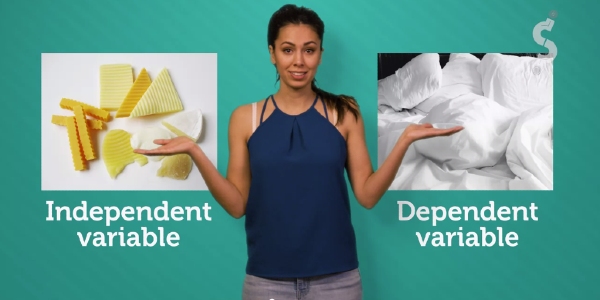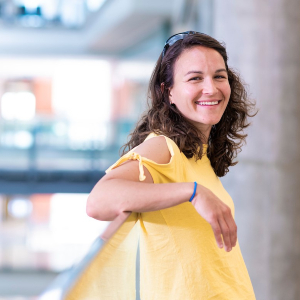
Science Literacy
We are often told not to believe everything we read online or see on TV—but how do we tell the difference between sensationalized statistics and a real scientific study? Learn how to spot sound science in this 5-week course.
Take online for free
Sign up for free on Coursera today or upgrade to get a certificate.
About the Course
We are often told not to believe everything we read online or see on TV—but how do we tell the difference between sensationalized statistics and a real scientific study? Learn how to spot sound science with our new online course in Science Literacy. Join Claire Scavuzzo and Rachel Buehl in this new, five-week Massive Open Online Course (MOOC) from the University of Alberta, Faculty of Science, hosted on Coursera.
In Science Literacy, you’ll hear from:
- Timothy Caulfield, Canada Research Chair in Health Law and Policy and star of Netflix’s “A User's Guide to Cheating Death” on pseudoscience
- Torah Kachur, scientist and CBC journalist on science communication (and miscommunication!)
- Christian Nelson, citizen scientist and creator of Edmonton Weather Nerdery, on experimental design
- Métis Elder Elmer Ghostkeeper and Cree Elder Rose Wabasca, on the holistic nature of Indigenous wisdom and how it can work with the scientific process
- David Rast, scientist and psychology expert, on uncertainty and decision making
Time Commitment: The course can be completed at the learner’s own pace, at roughly five weeks with five to seven hours per week of study.

Curriculum Alignment
Taking the course as an Alberta junior high or high school student? Mountains 101 content aligns with parts of the Alberta curriculum for Science 7, 8, 9, 10, and 20. Learn how U of A MOOCs align with Alberta's secondary curricula.
Learning Outcomes
After completing this course, you will be able to:
- Recognize that science is a systematic approach to evidence, differentiate science from common sense and intuition, recognize bias, and discuss how Indigenous wisdom can inform and complement the scientific method.
- Differentiate between science, pseudoscience, fake science, fraudulent science, and explain what makes pseudoscience both attractive and dangerous.
- Think critically when presented with new information, explain the difference between correlation and causation, identify unfalsifiable hypotheses, and apply a critical thinking framework as an approach to skepticism.
- Differentiate the scientific method from critical thinking frameworks, generate null and alternative hypotheses, define and measure variables, and apply the appropriate research design to a given situation.
- Differentiate peer-reviewed primary literature from mainstream media, and describe the utility of statistics for scientists and peer review
- Evaluate reporting of scientific findings in the media and identify media tactics that bias public understanding by misrepresenting interpretations of scientific findings
Course Format
Prerequisites:
There are no prerequisites, but students are encouraged to enroll in this course with an open mind. This course is aimed at anybody who has an interest in science or who wants to better understand which news stories, social media posts, or theories they can trust. The material is equivalent to a first-year university-level course, but is useful for any member of the general public who interacts with science through the media, school, work, or even products they use. General science students or those entering a science degree will find this course particularly useful.
All five modules of content with practice quizzes, reflective quizzes and interactive learning objects are available for free. Upgrade to a paid certificate option to access end-of-module exams and test your new skills.
Take the course for free & learn how to spot sound science
Instructor
Claire Scavuzzo, Lecturer & postdoctoral researcher
Department of Psychology, University of Alberta
Claire Scavuzzo is a lecturer and postdoctoral researcher in the Department of Psychology at the University of Alberta, Faculty of Science. Claire has been teaching scientific literacy skills within undergraduate and graduate psychology courses at University of Alberta, MacEwan University and Athabasca University. Claire has been spending the pandemic social distancing, playing with kids outside, and going on bike rides, hikes, and beach days in the river valley."
Syllabus
Module 1 - Introduction to Science
- Lesson 1: Welcome to Science Literacy
- Lesson 2: Traditional Knowledge, Part 1
- Lesson 3: Traditional Knowledge, Part 2
- Lesson 4: Traditional Knowledge, Part 3
- Lesson 5: A Difference of Opinion
- Lesson 6: Heuristics
- Lesson 7: Science isn't "Just a Theory"
Module 3 - Pseudoscience
- Lesson 1: Pseudoscience and Science-ploitation
- Lesson 2: Fraud Science, Bad Science or Pseudoscience?
- Lesson 3: Why do we fall for Pseudoscience?
Module 4 - Critical Thinking
- Lesson 1: Alternative Explanations
- Lesson 2: Correlation is not Causation
- Lesson 3: Replicability in Evidence
- Lesson 4: The Strength of Evidence
- Lesson 5: Falsifiability
- Lesson 6: Occam's Razor
Module 5 - Scientific Methods
- Lesson 1: Variables
- Lesson 2: Research techniques and models
- Lesson 3: Sampling
- Lesson 4: Correlation
Module 6 - Interpreting Evidence
- Lesson 1: Peer Review: The Scientist's Perspective
- Lesson 2: Statistics
- Lesson 3: Science Communication
- Lesson 4: Sharpening and Levelling
- Lesson 5: Science vs. Opinions
- Lesson 6: Scientists Can Miscommunicate Their Science Too
